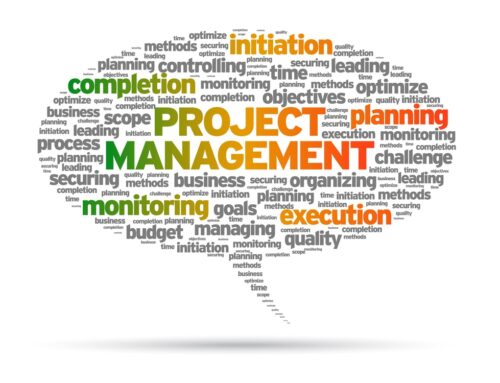Communication in project management in IT becomes the lifeblood of any project, keeping the project team engaged and focused, ensuring project goals and deadlines are met, and anticipating potential issues that could affect completion. Project managers have an arsenal of tools at their disposal to aid in their efforts, but the best know a successful project depends most on efficient and effective communication. Creating a solid communication plan gives the project manager working knowledge of progress in real-time and keeps expectations clear for team members. Read on to learn more about the importance of communication in project management.

How Communication in Project Management is Affected
The impact of poor communication on a project can be devastating. Smaller projects with only a few team members require heavier workloads on individuals, so a single mistake in project planning can derail efforts in several areas of the project. Larger projects often have an expected margin of error but require a larger team that must coordinate efficiently. In both cases, poor communication channels can result in project failure, even if the initial plans are well thought out. For the team, the project manager sets and enforces the rules of communication. The most important IT project manager skills is communication in order for the project to succeed.
Projects that don’t have a solid communication plan in place can suffer from a number of setbacks:
- Rigidity, preventing necessary deviation from the original plan
- Blind leadership, unaware of the obstacles faced by the project team
- Slow response time to critical issues, reactionary
- Uninformed decisions made by management
- Lack of confidence in leadership by team members
- Short-sighted decisions made by frustrated team members
On the other hand, creating a solid network of communication at the start of a project could prevent each of these issues:
- Fluidity, allowing the original plan to evolve as needed
- Informed leadership, available to support team members in a meaningful way
- Rapid response as issues occur, saving time and money, anticipatory
- Keeps management informed so decisions are relevant and beneficial
- Respect between team members and leads
- Decisions are left to qualified leaders who understand the bigger picture

Establish Effective Communication Skills
A project manager must be a skilled communicator and well-versed in various communication methods to set an example for the team. Simply crafting the perfect communication plan will not override poor management communication skills. For example, a team member who understands that status reports must be emailed to the team lead by noon every Friday may be reluctant to submit them on time if the team lead’s reaction is poor when expectations aren’t met or may start submitting a less detailed project status if there is never meaningful feedback.
Setting communication expectations clearly will help highlight those who struggle so adjustments can be made, preventing a negative impact on the project.
Communication Methods
Although a communication plan will not cover all communication methods, understanding the different types of communication is an important part of project management. This helps the project manager be an example of effective communication in Project management and provides a clearer understanding of what is happening when communication breakdowns.
Verbal Communication: Spoken communications such as face-to-face discussions or phone calls
Non-Verbal Communication: Eye contact, body language, gestures, paralanguage, and personal presentation
Visual Communication: Graphs and images, signs, illustrations, typography, and color
Written Communication: Handwritten, printed, or electronic text
Key Communication Points
To be an effective communicator, there are a few considerations project managers should keep in mind and monitor in the communications of the project team:
- Words should be direct and concise. Lengthy explanations lead to a less responsive audience, diluting the message. Say exactly what needs to be said and no more during phone calls and face-to-face meetings.
- Paralanguage is an often-overlooked factor in the communication process that can have a major impact on communications. The tone of voice pauses in speech, vocal speed, and facial expressions can all affect how a message is received.
- The presentation should be professional when discussing the project. Although coworkers often develop familiar relationships with one another, a professional demeanor should be adopted during project discussions to subtly remind the team to prioritize their roles.
- Written communication creates records. Keep all text professional and relevant.
- Remember that some individuals absorb information better from listening, some from reading, and some from visualizing.
- Any deviation from professional communications or ineffective communication styles within the team should be addressed directly.
Understanding the impact communication has on a project, the various styles of communication as well as recognizing communication gaps, can help you identify and resolve issues before they become a threat to the project.
Create a Project Communication Plan
A communication plan is a blueprint for project communication expectations. It ensures every team member understands which lines of communication are to be used for various project elements. Creating a communication plan is a simple process if you work through each step methodically. Before you begin, there are a few factors you need to consider.
- Who will be involved in communications? Determine who makes up your audience. Project team members and project management are an obvious start, but what about outside contractors, stakeholders, suppliers, executives, or your customers?
- What relevant information will be shared? Expense reports, status reports, risk assessment and management updates, schedule changes, etc.
- What specific communication methods are at your disposal? Do you have the means to hold in-person meetings? Other options include conference calls, printed reports, email, instant messaging, video meetings, press releases, etc.
- How often is communication needed? Will meetings are daily, weekly, or at certain points of the project? How often do updated reports need to be generated? Which communications need to be ongoing and which can be scheduled at regular intervals?
Once you can answer these questions, you’re ready to go through the steps of creating the communication plan for your project.
Identify Communication Needs
Look over the project life cycle to specify communication obligations. Speak with stakeholders and anyone who’ll need to be kept in the loop to find out their preferred methods of communication and their expectations for update frequency.

Determine Communication Objectives
Define the purposes for communications and ensure each interaction fulfills the intended purpose. Establish standards for meeting agendas and outline any communications you can anticipate in advance to keep them on topic.
Choose Communication Methods
Select the appropriate communication methods that allow stakeholders to share information without disrupting project completion efforts. Phone calls or texts are great for multiple daily updates, but in-person meetings require preparation and should be less frequent.
Set Frequency Expectations
How often should specific updates be shared? Sometimes different relevant parties prefer to receive more or less communication.
Name Responsible Parties
Clearly determine who’s responsible for the creation, delivery, and receipt of each communication. Identify the various audiences that will need updates and determine which communications are relevant to each.
An SME in project management can play an important role as an immediate point of contact for concerns with quick solutions.

Finalize and Share Your Plan
Create a document and make sure everyone clearly understands their role in the communication chain. Give them the opportunity to point out potential issues and offer suggestions so the plan works well for everyone. Once it’s finalized, offer copies of relevant expectations to each person involved in the project.
Here at EIRE Systems, we are dedicated to sharing information that will help your business succeed. Contact us today so that we can help you with your IT project management needs.
About the Author: EIRE Systems
EIRE Systems is a leading independent provider of professional IT, AV and Access Security services to the financial, insurance, manufacturing, health care, retail, construction, hospitality, commercial real estate, legal, educational and multinational sectors in Japan and throughout the Asia Pacific region. EIRE Systems has expertise across a wide spectrum of Information Technologies, with a track record for successfully completing hundreds of assignments since its establishment in 1996.



